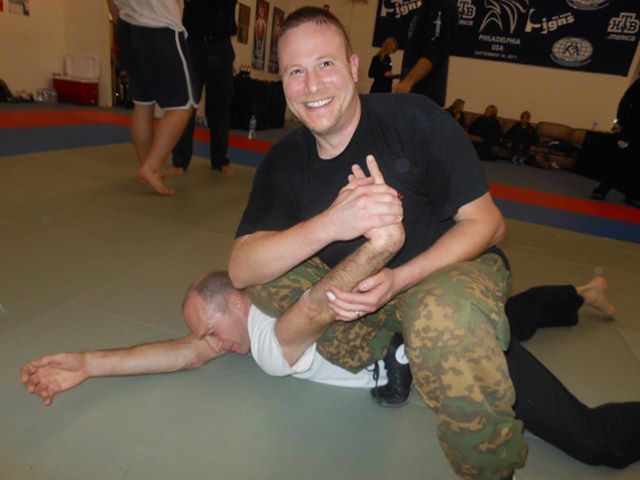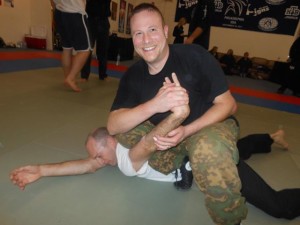Guest blog post by Combat Systema Instructor, David Rusin.
If you are like most people, you don’t have the luxury of spending hours each day in the training hall to prepare yourself for violent confrontation. So for the time we are able to spend in training, it is in our best interest to get the most out of the opportunities we have.
Fortunately, most people will not have to experience a violent encounter. But daily life imposes demands upon our bodies, too. So the question becomes, are there things that we can do in our training that will help keep us prepared for violent threats while also translating into a positive experience in our everyday lives?
Joint Health and Mobility
An aspect of physical life which has a direct and immediate impact on the quality of our experience, regardless of the activity, is the health of our joints. Because of this, joint mobility exercises should be an integral part of a training regimen.
As we age the only way we are able to properly nourish and lubricate our joints is to move them through their full range of motion. You’ve probably heard the phrase, “use it or lose it.” With regard to joint mobility, this statement is literally true. Neglect of any particular range of motion (ROM) in a joint can result in a loss of mobility in that joint over time.
Having access to the full range of motion within our joints provides for more options when dealing with a threat of any type. Limited mobility yields limited options. Therefore, it is paramount that training includes means to recover any lost mobility, and to maintain access to the full range of motion in our joints.
Movement in Combat Systema
Here is a practical example of this concept. In Combat Systema we consider two ways of responding to externally applied force – movement by part and movement by whole. Movement by part simply means that only the part of the body upon which force is applied will move in response to that force. Movement by whole means the entire body will move in response to applied force.
When moving by part, our structural stability begins to become compromised at the point at which maximum range of motion of the affected body part is reached. Thus, the greater mobility and joint function we have available to us, the more we are able to accommodate external force, moving by part, without having our structure compromised.
An effective means of recovering and maintaining full mobility in the joints is through the use of joint circles. This simply means moving each joint through a circular pattern at the maximum ROM to which you currently have access. Slow, smooth and controlled motion is best in order to remain relaxed and to be sensitive to any problem areas. Breathing should be coordinated with the movements, which also facilitates moving through areas of tension.
Movement through multiple planes simultaneously is more efficient than movement through a single plane. Therefore, a progression from joint circles to figure eight or helical movement patterns develops greater efficiency of motion while also contributing to healthy joints. These movements also have direct martial value, such as with evasions and strikes, so incorporating them into regular practice has multiple benefits.
Injuries can often occur when sudden, unexpected motion outside our normal ROM occurs. If you have ever stepped off a curb or stair, and had your ankle twisted, you’ll understand this concept. A sprain or other injury can occur if the joint is not accustomed to movement through the maximum range of motion. In a violent encounter, sudden movement outside normal range of motion is a distinct possibility. Thus, recovering and maintaining full ROM in all of our joints, and developing a level of comfort moving through extreme ranges of motion can help to keep our joints safe in any situation.
The benefits of healthy joints affect not only our daily life where most demands are imposed upon us on a regular basis, but also help to keep the body better prepared for dealing with threats. Simple movement patterns such as joint circles and figure eights can be incorporated at the beginning of a training session to warm the joints up for the session. Done regularly, these exercises can also help to maintain bodily preparedness when not in the training hall.
About the Author
David Rusin has studied various forms of martial arts for over two decades. For the last 13 years his primary training focus has been the study of Russian Martial Arts. During this time he has achieved instructor certifications in the ROSS Training System of Russian Martial Art under the tutelage of the American national ROSS Instructor Cadre, and more recently in Combat Systema under that system’s founder, Kevin Secours. He currently offers private and group instruction in Russian Martial Art near his home in Ocean Township, NJ. He can be reached via email at RMAinNJ@gmail.com







Leave A Response